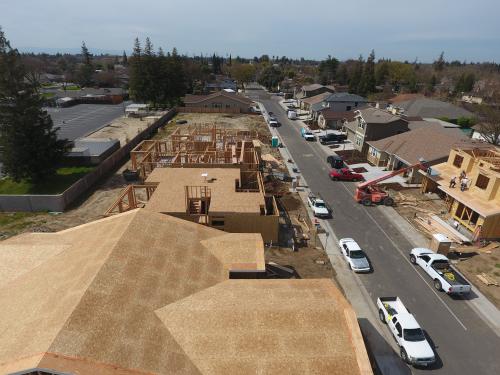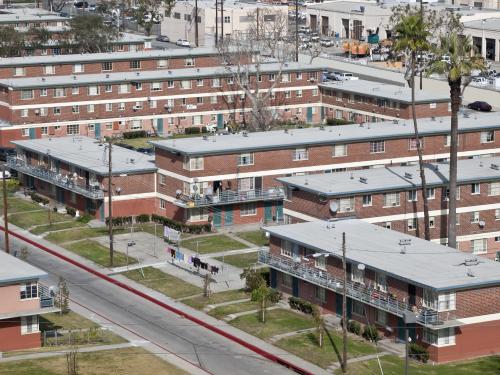Economically competitive regions need housing that connects their workers to jobs, schools, and transportation. Business leaders fundamentally understand that. And because increasing the supply and diversity of that “connected” housing requires an array of partners, affordable housing advocates often look to business leaders to help make the case to policymakers and voters.
But let’s be real: housing is not often at the top, or even the middle, of a CEO’s priority list.
As a longtime business leader in the Chicago region, I have learned a few lessons on how we might move the needle on critical regional housing issues while adding allies along the way.
Let’s be real: housing is not often at the top, or even the middle, of a CEO’s priority list.
How I got involved in housing issues
I first became active in the housing field when I was the CEO of the Pittway Corporation, a manufacturer of professional alarm systems. I had worked directly in factory environments for 13 years and with personnel department leaders on employee issues. I knew the cost of employee turnover in terms of productivity and how that impacted an income statement. I also knew how hard it was to recruit skilled workers like machine operators, mechanics, and knowledgeable warehouse workers.
Therefore, I was a “primed pump” when I met Robin Snyderman, then Housing Director at the Metropolitan Planning Council, in 1999. I recognized that many valued employees at Pittway’s System Sensor manufacturing plant in St. Charles, Illinois could not afford to own a home near the plant. As Robin talked about the idea of employer-assisted housing (EAH), it immediately rang a bell for me. We embarked on an EAH program at Pittway’s System Sensor division in mid-1999. By providing down payment assistance and the services of a local nonprofit housing counseling agency, the program helped over 60 employees buy homes closer to work, improved morale, and saved money.
I became active with the Metropolitan Planning Council (MPC) at that time and helped them pitch the program to employers and policymakers. That helped get the Metropolitan Mayors Caucus’ Housing Committee focused on “live-near-work solutions” and informed our early efforts with the Illinois Governor’s Housing Task Force as well. Mayors and state leaders were compelled by the idea of encouraging employers to invest in housing solutions. We successfully advocated that other employers get incentives (tax credits and matching funds) for this work. We got around 60 employers to follow suit, thus helping more than 2,000 employees buy homes closer to work. I eventually joined another regional civic organization, Metropolis 2020, to continue work on housing issues.
What I learned about engaging business leaders
Notwithstanding these successes, it was always a challenge getting employers to understand why they should care about housing. Most CEOs do not pay much attention to the housing issues that impact their employees. Most do not really understand the day-to-day cost impact that employee turnover has on their operations. They do not spend enough time working with their personnel departments, and they are not under any pressure from their employees to adopt EAH programs or otherwise become involved in housing programs.
To me, this means that housing advocates should pursue a couple of different paths toward employer engagement.
- Use data to engage employers directly: To make the case for EAH or a local development or needed policy change, share data on the cost of employee turnover and the value of employee retention, the quality of local schools and transit access, and the mismatch between local wages and local housing and transportation costs. Get high-level buy-in from the CEO and head of human resources. If they are on board, they can make things happen. They can implement programs like EAH. Equally important, they can become strong public voices in support of diverse housing options in the region.
- Engage employers through policymakers: I saw firsthand how the Mayors Caucus accelerated its original Housing Action Agenda when focusing on housing affordable to the local workforce. To this day, I remain on the planning team of a regional housing effort called Homes for a Changing Region, which helps municipal governments plan for future housing needs. Utilizing data on local salaries and projected employment trends, this effort educates local governments about current and future housing needs. Over the last 13 years, it has helped generate over 1,000 new housing units. More than 43 communities have now created forward-looking housing plans using the Homes for a Changing Region approach. While business leaders can help bolster municipal leaders’ support for diverse housing options, getting municipal buy-in first helps answer the first question many businesses will ask: how will local public leadership react?
There are no easy answers here, and crafting the right message is tough. However, when you are able to target leaders who are receptive to the conversation, and you present them with information that resonates with their experience and the needs of their workforce, you may find yourself with some new, strong allies. Building this bench of champions is critical to succeeding in an environment of NIMBYism and limited resources. You never know which CEO is going to be your region’s next housing advocate!






Commentary
A business leader’s perspective on meeting regional housing needs
February 8, 2018